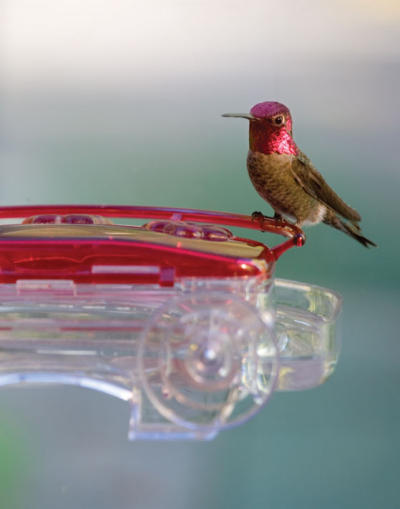Jewels of Nature

According to research, hummingbirds hold the record for possessing the fastest metabolism of any animal on the planet. Hummingbirds can consume up to twice their body weight in nectar every day. In order to accomplish this amazing feat, hummingbirds’ bills and tongues have evolved into incredibly efficient feeding tools.
Despite popular belief, hummingbirds do not suck up nectar with their bills. They actually lap it up with their tongues. While dipping their grooved tongues into nectar sources at up to 12 times a second, the nectar is drawn up and into their mouth each and every time. You can see this remarkable tongue in action with our WBU® Hummingbird Feeder. It features a transparent bottom that allows you to see a hummingbird’s long tongue and rapid lapping action.
Hummingbird nests are made of plant down, glued together with spider webs and tree sap. These nests are usually located on pencil-sized limbs and are camouflaged with bits of lichen.
Female hummingbirds raise their young alone. Due to the males’ extremely aggressive territorial behavior, females will establish a nesting area outside of the males’ feeding territory.
In the Conejo Valley we are lucky to have two year round resident hummingbird species. The Allen's hummingbird and the Anna's hummingbird.
Allen's Hummingbirds are coppery orange and green overall. Adult males have a coppery tail, eye patch, and belly that contrasts with their bronze-green back and deep reddish orange gorget. Females and immatures are bronze-green above with paler coppery sides. They both have bits of bronze spotting on their throats, though females have more spots and a small patch of reddish orange in the center of the throat.
Anna’s Hummingbirds are mostly green and gray, without any rufous or orange marks on the body. The male's head and throat are covered in iridescent reddish-pink feathers that can look dull brown or gray without direct sunlight.
ID descriptions from: https://www.allaboutbirds.org/guide

